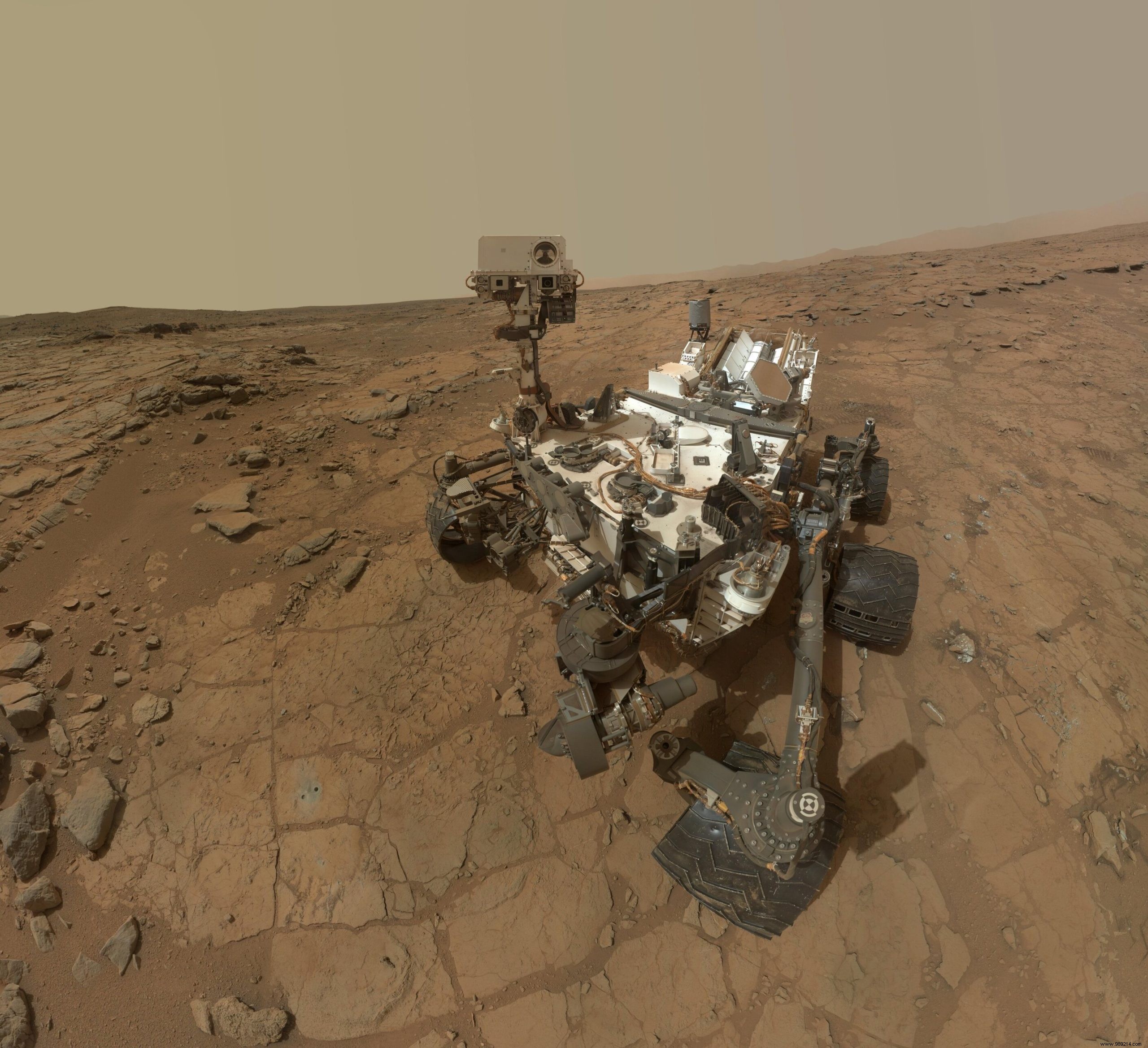Perseverance could be the one that will guarantee us the existence of an extraterrestrial life form in the Universe. To carry out his mission, he will have to cover a lot of ground, but also sometimes manage on his own. How do you actually drive a rover on Mars?
In less than two months , NASA's new Perseverance rover is set to land on the surface of Mars, in Jezero Crater. The rover will then conduct a number of experiments with the aim of better characterizing the geological history of the planet and assessing its potential for habitability. To do this, Perseverance will naturally have to move. Remember, however, that the simple fact of evolving this type of machine on Mars is not a simple task.
In a new post, Evan Hilgemann, engineer at NASA, details the different ways to operate. Last year, the latter was indeed selected to join the team of engineers responsible for controlling the conduct of Curiosity on site since 2012.
More specifically, Hilgemann and his team must ensure that he avoids as much as possible any object likely to damage his suspension system or even his wheels . According to him, Curiosity can handle small boulders a few centimeters high, "but anything larger should be avoided ". And we must not forget the types of too soft terrain in which Curiosity could get stuck.
Note that these types of terrain will also need to be avoided by Perseverance . However, remember that its wheels are different from those used by Curiosity which have been damaged several times due to sharp rocks. Made from a block of aircraft-grade aluminum and fitted with titanium spokes, the Perseverance ones are indeed bigger and thicker . Its studs have also been redesigned.
The Perseverance rover can be driven in several ways. In his post, the engineer recalls that given the distance that separates the Earth from the planet Mars, the signals take about twenty-two minutes to travel . Also, rovers sometimes have to take care of certain navigation tasks on their own. However, "most of what they do is actually very scripted and pre-planned on Earth “, he writes.
Perseverance is equipped with a number of 3D cameras allowing it to "see" its near and distant surroundings. These "navcams", as they are called, will allow ground teams to virtually recreate the terrain covered by the rover .
Based on the images returned by its cameras, the engineers will then be able to analyze the nearby environment in order to identify any obstacles and ensure that the view is clear towards the Earth in order to be able to communicate with the rover. Hundreds of lines of code will then be written before being communicated to the machine. Typically, a typical trip will require between three and five hours of planning .

Perseverance can also be based on the technique of visual odometry. In this case, the rover will stop every meter or so to send back an image of what it sees. A computer can then tell him to continue or not. Finally, Perseverance will also have a very advanced navigation mode called "autonav". As the name suggests, this mode will turn the rover into an autonomous vehicle.
In contrast, "because autonav must stop frequently to take multiple images and analyze data, it is also the slowest driving mode “, continues Hilgemann. "Curiosity only covers about thirty meters in an hour in automatic navigation mode ". However, Perseverance will be able to "drive at least twice as fast as Curiosity thanks to new dedicated computing resources and better algorithms “.
In the meantime, Perseverance will already have to land, which will not be an easy task. This video shared by NASA details the different stages of this upcoming landing which, all in all, should last about seven minutes .
While the descent stage will be 21 meters above the ground, the rover will be lowered after three 7.50 meter long cables. It will then deploy its wheels and will be released as soon as the system controlling the descent detects that the traction forces exerted on the cables have weakened, as a result of the effective removal of Perseverance. A pyrotechnic system will then separate the rover from the descent stage. Then the latter will begin a maneuver so as to deviate from the landing zone (at least 150 meters away).